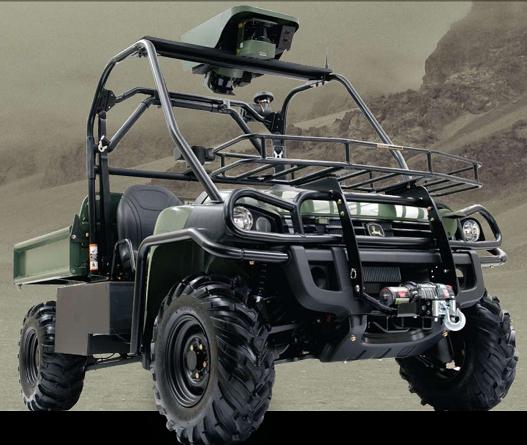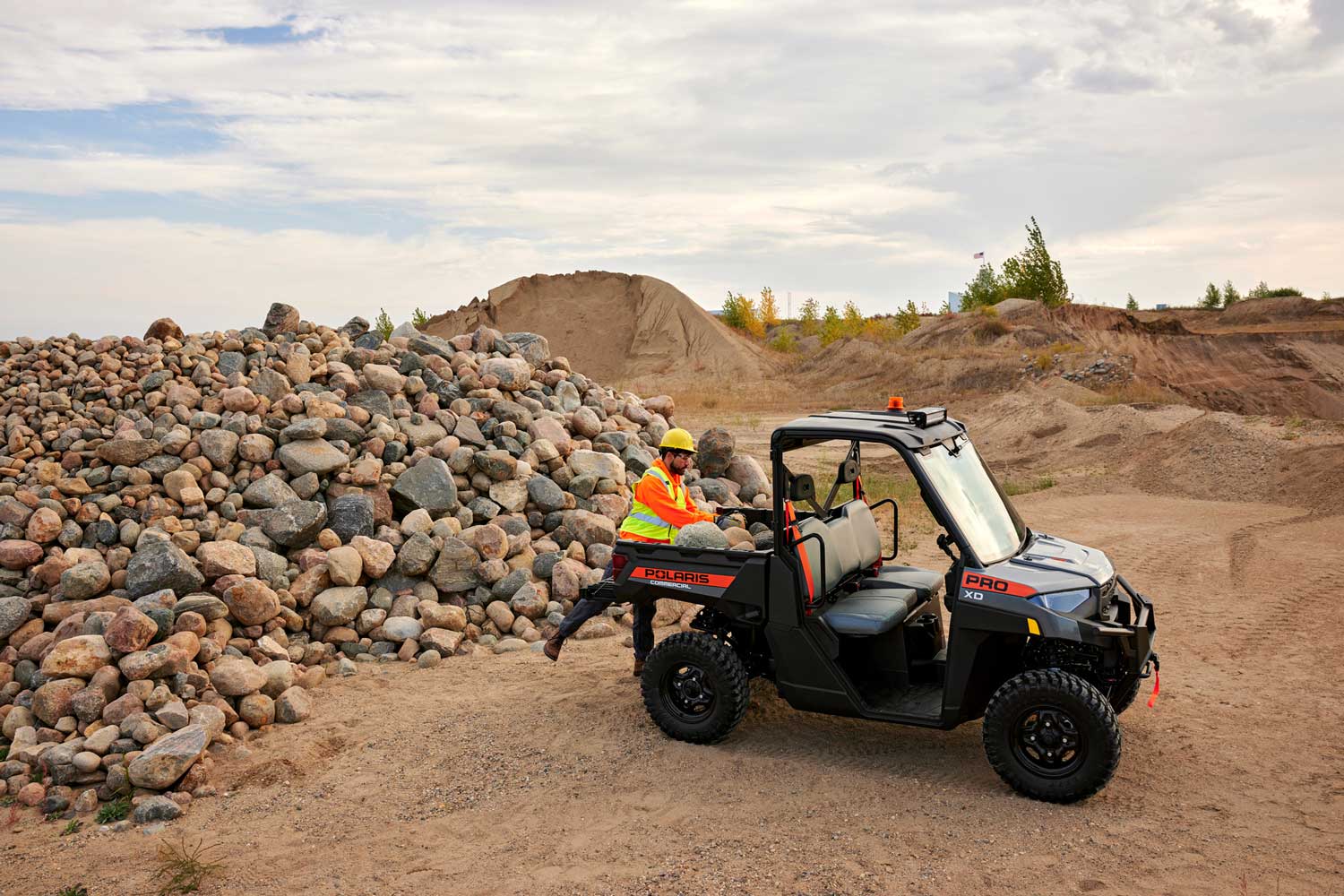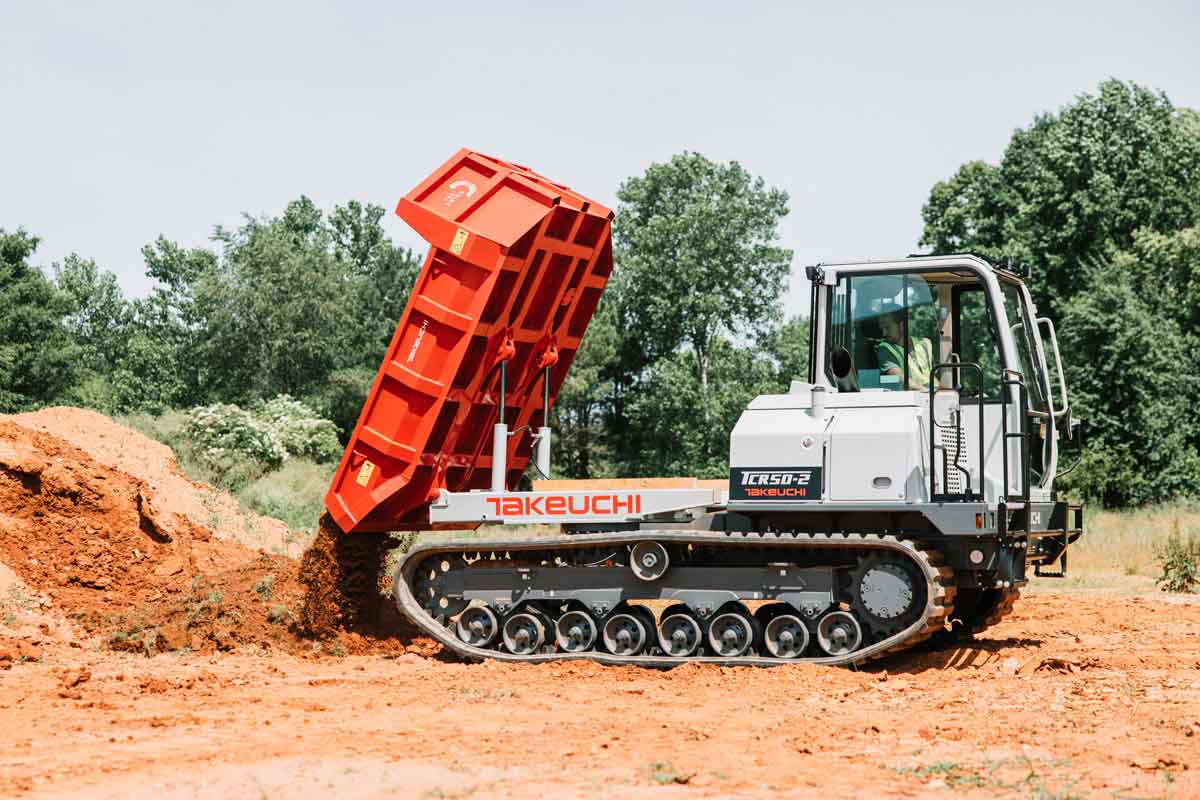The Evolution of the Gator: John Deere XUV Press Event, Part 2 — The R-Gator
 Sentient war machines traversing a desolate battlefield littered with the metal remains of mechanical soldiers. It might seem like a future scene ripped from The Terminator, but the technology in John Deere‘s R-Gator robotic utility vehicle shows us that robotic warfare is closer than we think.
Sentient war machines traversing a desolate battlefield littered with the metal remains of mechanical soldiers. It might seem like a future scene ripped from The Terminator, but the technology in John Deere‘s R-Gator robotic utility vehicle shows us that robotic warfare is closer than we think.
Combining the go-anywhere Gator attitude with cutting edge technology, the John Deere Military Affairs Group has created a Gator that can be programmed to run a set course, learn a course and repeat it, controlled remotely and seek out coordinates on its own, all while avoiding obstacles and keeping the men and women that operate it out of harms way. It’s one of those machines where its abilities overshadow its applications. It’s basically a UTV with a brain. Tell it to go somewhere by inputting coordinates into the computer and it goes there. Flip a switch while driving a path and it remembers the path and can drive it continuously by itself. Or pick up a Microsoft Xbox 360 controller and pilot it like your favorite racing video game. All this technology is real. And it works. Just check out the video below (it’s surreal to see a Gator driving itself).
Mark Bodwell, worldwide military affairs group manager for John Deere, was on hand at the John Deere Gator Press Event last week at the Carolina Adventure World in South Carolina to talk about the technology. The R-Gator can use both cellular or GPS signals to map its whereabouts and find its routes. Its wireless signal works off the same broadband Wi-Fi hub that is probably connecting you to the internet as you read this. The importance of the availability and ease of use of the technology was paramount, Bodwell explained.
For example, the motivation for implementing an Xbox 360 controller as the way to remotely operate the R-Gator was two fold: 1) guys play video games and it’s a much more intuitive control system for them as opposed to a complicated control scheme where you have to worry about pitches and vectors and angles and 2) if a controller breaks or isn’t working, you can pick one up for $40 at any store or grab one from a soldier’s bunk.
The R-Gator also packed on some muscle compared to its civilian counterparts. The John Deere team refined the chassis of its popular autonomous vehicle to give the go-anywhere R-Gator an independent suspension and improved ground clearance. The updated R-Gator also boasts a faster top speed, travelling up to 35 mph in manual mode.
“Since we’re always looking to improve our products, we’ve been running R-Gator exercises with soldiers and marines,” said Mark Bodwell, worldwide military affairs group manager for John Deere. “Through those exercises, we’ve come to appreciate just how important it is to be able to navigate hilly or rough terrain quickly. The improved R-Gator was developed in direct response to the military feedback we received.”
The R-Gator has 11 in. of ground clearance and its four-wheel, independent suspension is fully adjustable for improved mobility and superior fording capabilities.
Based on the proven M-Gator military vehicle platform [the previous incarnation of the military Gator], the R-Gator employs commercial off-the-shelf technology and includes precision guidance, navigation and obstacle avoidance technology that has been at work for two decades in John Deere’s agricultural products. The R-Gator can be operated in manual, tele-operational or fully autonomous mode during day and night and supports military personnel through lightening the load, persistent stare, cargo carrying, point-man reconnaissance, roving patrols, resupply and casualty evacuation to name a few.
To help soldiers with their loads, John Deere and Boeing Defence UK teamed up to develop the assisted carriage system, which can support and offload 1,400 lbs of individual equipment. It is designed to carry an increased level of ready combat supplies for more effective patrolling and re-supply operations. Most importantly, the vehicle can operate autonomously, be driven manually, and be reconfigured to meet a multitude of ground support needs.




